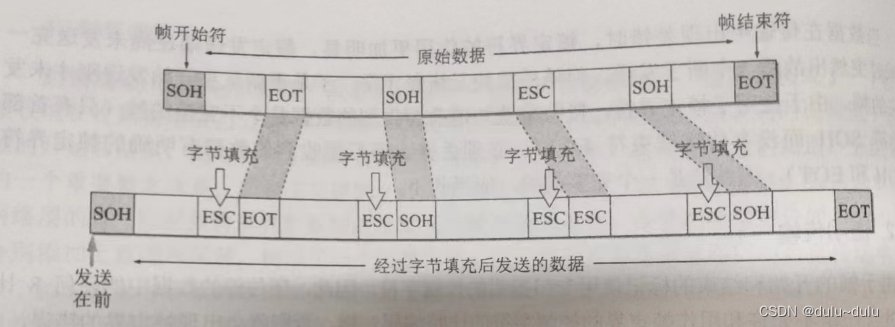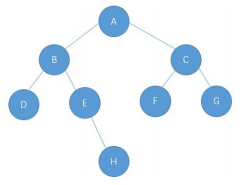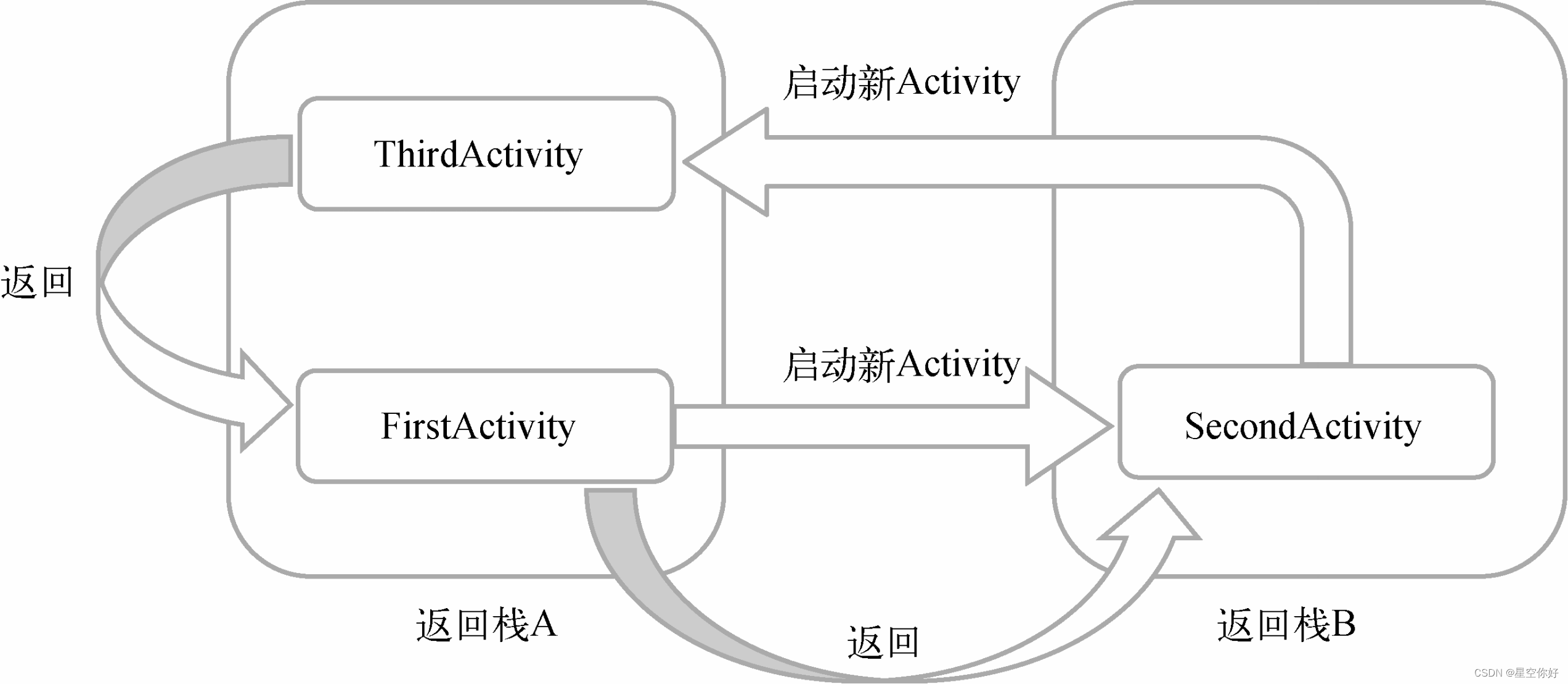题目一:DS图 -- 图的连通分量
题目描述:
输入无向图顶点信息和边信息,创建图的邻接矩阵存储结构,计算图的连通分量个数。
输入要求:
测试次数t
每组测试数据格式如下:
第一行:顶点数 顶点信息
第二行:边数
第三行开始,每行一条边信息
输出要求:
每组测试数据输出,顶点信息和邻接矩阵信息
输出图的连通分量个数,具体输出格式见样例。
每组输出直接用空行分隔。
输入样例:
3
4 A B C D
2
A B
A C
6 V1 V2 V3 V4 V5 V6
5
V1 V2
V1 V3
V2 V4
V5 V6
V3 V5
8 1 2 3 4 5 6 7 8
5
1 2
1 3
5 6
5 7
4 8输出样例:
A B C D
0 1 1 0
1 0 0 0
1 0 0 0
0 0 0 0
2
V1 V2 V3 V4 V5 V6
0 1 1 0 0 0
1 0 0 1 0 0
1 0 0 0 1 0
0 1 0 0 0 0
0 0 1 0 0 1
0 0 0 0 1 0
1
1 2 3 4 5 6 7 8
0 1 1 0 0 0 0 0
1 0 0 0 0 0 0 0
1 0 0 0 0 0 0 0
0 0 0 0 0 0 0 1
0 0 0 0 0 1 1 0
0 0 0 0 1 0 0 0
0 0 0 0 1 0 0 0
0 0 0 1 0 0 0 0
3代码示例:
#include <iostream>
#include <string>
#include <cstring>
#include <iomanip>
#include <algorithm>
#include <cmath>
#include <queue>
using namespace std;
class Map {
private:
int** array;
string* vertex;
int n;
bool visited[20];
int partnumber;
public:
Map() {
cin >> n;
array = new int* [n];
for (int i = 0; i < n; i++) {
array[i] = new int[n];
for (int j = 0; j < n; j++) array[i][j] = 0;
}
vertex = new string[n];
for (int i = 0; i < n; i++) cin >> vertex[i];
partnumber = 0;
}
int findIndex(string str) {
for (int i = 0; i < n; i++) if (str == vertex[i]) return i;
return -1;
}
void createMap() {
int n, v1, v2;
string ch1, ch2;
cin >> n;
for (int i = 0; i < n; i++) {
cin >> ch1 >> ch2;
v1 = findIndex(ch1);
v2 = findIndex(ch2);
array[v1][v2] = 1, array[v2][v1] = 1;
}
}
void DFSTraverse() {
for (int i = 0; i < n; i++) visited[i] = false;
for (int i = 0; i < n; i++) {
if (!visited[i]) {
DFS(i);
partnumber++;
}
}
}
void DFS(int v) {
visited[v] = true;
int* temp = new int[n];
int pos = 0;
for (int i = 0; i < n; i++) if (array[v][i]) temp[pos++] = i;
for (int i = 0; i < pos; i++) if (!visited[temp[i]]) DFS(temp[i]);
}
void printMap() {
for (int i = 0; i < n; i++) {
cout << vertex[i];
if (i == n - 1) cout << endl;
else cout << " ";
}
for (int i = 0; i < n; i++) {
for (int j = 0; j < n; j++) {
cout << array[i][j];
if (j == n - 1) cout << endl;
else cout << " ";
}
}
cout << partnumber << endl;
}
~Map() {
for (int i = 0; i < n; i++) delete[]array[i];
delete[]array;
delete[]vertex;
}
};
int main() {
int t;
cin >> t;
while (t--) {
Map M;
M.createMap();
M.DFSTraverse();
M.printMap();
cout << endl;
}
return 0;
}题目二:DS图 -- 最小生成树
题目描述:
根据输入创建无向网。分别用Prim算法和Kruskal算法构建最小生成树。(假设:输入数据的最小生成树唯一。)
输入要求:
顶点数n
n个顶点
边数m
m条边信息,格式为:顶点1顶点2权值
Prim算法的起点v
输出要求:
输出最小生成树的权值之和
对两种算法,按树的生长顺序,输出边信息(Kruskal中边顶点按数组序号升序输出)
输入样例:
6
v1 v2 v3 v4 v5 v6
10
v1 v2 6
v1 v3 1
v1 v4 5
v2 v3 5
v2 v5 3
v3 v4 5
v3 v5 6
v3 v6 4
v4 v6 2
v5 v6 6
v1
输出样例:
15
prim:
v1 v3 1
v3 v6 4
v6 v4 2
v3 v2 5
v2 v5 3
kruskal:
v1 v3 1
v4 v6 2
v2 v5 3
v3 v6 4
v2 v3 5代码示例:
#include <iostream>
#include <string>
#include <cstring>
#include <iomanip>
#include <algorithm>
#include <cmath>
#include <queue>
using namespace std;
const int MAXNUMBER = 100;
struct Close {
int adjvex;
int loweight = 0x3f3f3f3f;
} closedge[MAXNUMBER];
struct Path {
int head;
int tail;
};
class Map {
int matrix[MAXNUMBER][MAXNUMBER] = { 0 };
string* vertex;
int n;//顶点数
int leastWeight = 0;
vector<Path> path;
int shortdis[MAXNUMBER];
public:
Map() {
cin >> n;
vertex = new string[n];
for (int i = 0; i < n; i++) cin >> vertex[i];
for (int i = 0; i < n; i++) shortdis[i] = i;
int edge;
cin >> edge;
for (int i = 0; i < edge; i++) {
string vex1, vex2;
int weight;
cin >> vex1 >> vex2 >> weight;
matrix[find(vex1)][find(vex2)] = matrix[find(vex2)][find(vex1)] = weight;
}
}
int find(string str) {
for (int i = 0; i < n; i++)
if (vertex[i] == str) return i;
}
void Prim() {
string start_vertex;
cin >> start_vertex;
int start = find(start_vertex);
for (int i = 0; i < n; i++) {
if (matrix[start][i]) closedge[i] = { start, matrix[start][i] };
else closedge[i].adjvex = start;
}
closedge[start].loweight = 0;
for (int i = 1; i < n; i++) {
int minWeight = 0x3f3f3f3f, nextedge;
for (int j = 0; j < n; j++)
if (minWeight > closedge[j].loweight && closedge[j].loweight) {
minWeight = closedge[j].loweight;
nextedge = j;
}
closedge[nextedge].loweight = 0;
Path p = { closedge[nextedge].adjvex, nextedge };
path.push_back(p);
leastWeight += minWeight;
for (int j = 0; j < n; j++)
if (closedge[j].loweight > matrix[nextedge][j] && matrix[nextedge][j])
closedge[j] = { nextedge, matrix[nextedge][j] };
}
cout << leastWeight << endl;
cout << "prim:" << endl;
for (auto& item : path)
cout << vertex[item.head] << ' ' << vertex[item.tail] << ' ' << matrix[item.head][item.tail] << endl;
}
int get(int x) {
if (shortdis[x] == x) return x;
return get(shortdis[x]);
}
void Kruskal() {
path.clear();
cout << "kruskal:" << endl;
int cnt = 0;
for (int k = 0; k < n - 1; k++) {
int minWeight = 0x3f3f3f3f, tail = 0, head = 0;
for (int i = 0; i < n; i++) {
for (int j = i + 1; j < n; j++) {
if (matrix[i][j] && minWeight > matrix[i][j] && get(i) != get(j)) {
head = i, tail = j;
minWeight = matrix[i][j];
}
}
}
shortdis[get(tail)] = get(head);
Path p = { head, tail };
path.push_back(p);
leastWeight += minWeight;
if (tail || head) cnt++;
}
if (cnt == n - 1) {
//cout << leastWeight << endl;
for (auto& item : path) cout << vertex[item.head] << ' ' << vertex[item.tail] << ' ' << matrix[item.head][item.tail] << endl;
}
else cout << "-1" << endl;
}
};
int main() {
Map map;
map.Prim();
map.Kruskal();
}题目三:DS图 -- 汉密尔顿回路
题目描述:
著名的“汉密尔顿(Hamilton)回路问题”是要找一个能遍历图中所有顶点的简单回路(即每个顶点只访问 1 次)。本题就要求你判断任一给定的回路是否汉密尔顿回路。
输入要求:
首先第一行给出两个正整数:无向图中顶点数 N(2<N≤200)和边数 M。随后 M 行,每行给出一条边的两个端点,格式为“顶点1 顶点2”,其中顶点从 1 到N 编号。再下一行给出一个正整数 K,是待检验的回路的条数。随后 K 行,每行给出一条待检回路,格式为:
n V1 V2 ⋯ Vn
其中 n 是回路中的顶点数,Vi 是路径上的顶点编号。
输出要求:
对每条待检回路,如果是汉密尔顿回路,就在一行中输出"YES",否则输出"NO"。
输入样例:
6 10
6 2
3 4
1 5
2 5
3 1
4 1
1 6
6 3
1 2
4 5
6
7 5 1 4 3 6 2 5
6 5 1 4 3 6 2
9 6 2 1 6 3 4 5 2 6
4 1 2 5 1
7 6 1 3 4 5 2 6
7 6 1 2 5 4 3 1输出样例:
YES
NO
NO
NO
YES
NO代码示例:
#include <iostream>
#include <string>
#include <cstring>
#include <iomanip>
#include <algorithm>
#include <cmath>
#include <queue>
using namespace std;
class Map {
private:
int** array;
int* vertex;
int n;
bool visited[20];
int partnumber;
public:
Map() {
cin >> n;
array = new int* [n];
for (int i = 0; i < n; i++) {
array[i] = new int[n];
for (int j = 0; j < n; j++) array[i][j] = 0;
}
vertex = new int[n];
for (int i = 0; i < n; i++) vertex[i] = i + 1;
partnumber = 0;
}
int findIndex(int num) {
for (int i = 0; i < n; i++) if (num == vertex[i]) return i;
return -1;
}
void createMap() {
int m, v1, v2;
int num1, num2;
cin >> m;
for (int i = 0; i < m; i++) {
cin >> num1 >> num2;
v1 = findIndex(num1);
v2 = findIndex(num2);
array[v1][v2] = 1, array[v2][v1] = 1;
}
}
void DFSTraverse() {
for (int i = 0; i < n; i++) visited[i] = false;
for (int i = 0; i < n; i++) {
if (!visited[i]) {
DFS(i);
partnumber++;
}
}
}
void DFS(int v) {
visited[v] = true;
int* temp = new int[n];
int pos = 0;
for (int i = 0; i < n; i++) if (array[v][i]) temp[pos++] = i;
for (int i = 0; i < pos; i++) if (!visited[temp[i]]) DFS(temp[i]);
}
void printMap() {
for (int i = 0; i < n; i++) {
cout << vertex[i];
if (i == n - 1) cout << endl;
else cout << " ";
}
for (int i = 0; i < n; i++) {
for (int j = 0; j < n; j++) {
cout << array[i][j];
if (j == n - 1) cout << endl;
else cout << " ";
}
}
cout << partnumber << endl;
}
void Hamilton() {
int k;
bool mark = true;
int cnt[20] = { 0 };
cin >> k;
int head, tail;
cin >> head;
int start = head;
for (int i = 1; i < k; i++) {
cin >> tail;
cnt[tail]++;
if (i != k - 1 && tail == start || cnt[tail] == 2 && tail != start) mark = false;
if (!array[findIndex(head)][findIndex(tail)]){
cout << "NO" << endl;
continue;
}
head = tail;
if (start == tail && i == k - 1 && k >= n && mark) cout << "YES" << endl;
else if (start != tail && i == k - 1 || k < n && i == k - 1 || !mark && i == k - 1) cout << "NO" << endl;
}
}
~Map() {
for (int i = 0; i < n; i++) delete[]array[i];
delete[]array;
delete[]vertex;
}
};
int main() {
Map M;
M.createMap();
int t;
cin >> t;
while (t--) M.Hamilton();
return 0;
}题目四:DS图 -- 六度空间
题目描述:
“六度空间”理论又称作“六度分隔(Six Degrees of Separation)”理论。这个理论可以通俗地阐述为:“你和任何一个陌生人之间所间隔的人不会超过六个,也就是说,最多通过五个人你就能够认识任何一个陌生人。”
“六度空间”理论虽然得到广泛的认同,并且正在得到越来越多的应用。但是数十年来,试图验证这个理论始终是许多社会学家努力追求的目标。然而由于历史的原因,这样的研究具有太大的局限性和困难。随着当代人的联络主要依赖于电话、短信、微信以及因特网上即时通信等工具,能够体现社交网络关系的一手数据已经逐渐使得“六度空间”理论的验证成为可能。
假如给你一个社交网络图,请你对每个节点计算符合“六度空间”理论的结点占结点总数的百分比。
输入要求:
输入第1行给出两个正整数,分别表示社交网络图的结点数N(,表示人数)、边数M(≤33×N,表示社交关系数)。随后的M行对应M条边,每行给出一对正整数,分别是该条边直接连通的两个结点的编号(节点从1到N编号)。
输出要求:
对每个结点输出与该结点距离不超过6的结点数占结点总数的百分比,精确到小数点后2位。每个结节点输出一行,格式为“结点编号:(空格)百分比%”。
输入样例:
10 9
1 2
2 3
3 4
4 5
5 6
6 7
7 8
8 9
9 10输出样例:
1: 70.00%
2: 80.00%
3: 90.00%
4: 100.00%
5: 100.00%
6: 100.00%
7: 100.00%
8: 90.00%
9: 80.00%
10: 70.00%代码示例:
#include <iostream>
#include <string>
#include <cstring>
#include <iomanip>
#include <algorithm>
#include <cmath>
#include <queue>
using namespace std;
class Map {
private:
int** array;
int* vertex;
int n;
bool visited[20];
int partnumber;
int** reach;
public:
Map() {
cin >> n;
array = new int* [n];
reach = new int* [n];
for (int i = 0; i < n; i++) {
array[i] = new int[n];
reach[i] = new int[n];
for (int j = 0; j < n; j++) array[i][j] = 0, reach[i][j] = 0;
}
vertex = new int[n];
for (int i = 0; i < n; i++) vertex[i] = i + 1;
partnumber = 0;
}
int findIndex(int num) {
for (int i = 0; i < n; i++) if (num == vertex[i]) return i;
return -1;
}
void createMap() {
int m, v1, v2;
int num1, num2;
cin >> m;
for (int i = 0; i < m; i++) {
cin >> num1 >> num2;
v1 = findIndex(num1);
v2 = findIndex(num2);
array[v1][v2] = 1, array[v2][v1] = 1;
}
}
void SDS() {
for (int i = 0; i < n; i++) {
int number = SDSBFS(i);
cout << i + 1 << ": " << fixed << setprecision(2) << (double)number * 100 / n << "%" << endl;
memset(visited, false, sizeof(visited));
}
}
int SDSBFS(int i) {
int cnt = 0;
int level = 0, last = i, tail = -1;
queue<int> q;
visited[i] = true;
q.push(i);
cnt++;
while (!q.empty()) {
int k = q.front();
q.pop();
for (int j = 0; j < n; j++)
{
if (j == k) continue;
if (!visited[j] && array[k][j]) {
q.push(j);
tail = j;
visited[j] = true;
cnt++;
}
}
if (k == last) level++, last = tail;
if (level == 6) break;
}
return cnt;
}
~Map() {
for (int i = 0; i < n; i++) delete[]array[i];
delete[]array;
delete[]vertex;
}
};
int main() {
Map M;
M.createMap();
M.SDS();
}题目五:DS图 -- 红色警报
题目描述:
战争中保持各个城市间的连通性非常重要。本题要求你编写一个报警程序,当失去一个城市导致国家被分裂为多个无法连通的区域时,就发出红色警报。注意:若该国本来就不完全连通,是分裂的k个区域,而失去一个城市并不改变其他城市之间的连通性,则不要发出警报。
输入要求:
输入在第一行给出两个整数N(0 < N ≤ 500)和M(≤ 5000),分别为城市个数(于是默认城市从0到N-1编号)和连接两城市的通路条数。随后M行,每行给出一条通路所连接的两个城市的编号,其间以1个空格分隔。在城市信息之后给出被攻占的信息,即一个正整数K和随后的K个被攻占的城市的编号。
注意:输入保证给出的被攻占的城市编号都是合法的且无重复,但并不保证给出的通路没有重复。
输出要求:
对每个被攻占的城市,如果它会改变整个国家的连通性,则输出Red Alert: City k is lost!,其中k是该城市的编号;否则只输出City k is lost.即可。如果该国失去了最后一个城市,则增加一行输出Game Over.。
输入样例:
5 4
0 1
1 3
3 0
0 4
5
1 2 0 4 3输出样例:
City 1 is lost.
City 2 is lost.
Red Alert: City 0 is lost!
City 4 is lost.
City 3 is lost.
Game Over.代码示例:
#include <iostream>
#include <string>
#include <cstring>
#include <iomanip>
#include <algorithm>
#include <cmath>
#include <queue>
using namespace std;
class Map {
private:
int** array;
int* vertex;
int n;
bool visited[20];
int partnumber;
int** reach;
int origin[20];
public:
Map() {
cin >> n;
array = new int* [n];
reach = new int* [n];
for (int i = 0; i < n; i++) {
array[i] = new int[n];
reach[i] = new int[n];
for (int j = 0; j < n; j++) array[i][j] = 0, reach[i][j] = 0;
}
vertex = new int[n];
for (int i = 0; i < n; i++) vertex[i] = i;
partnumber = 0;
}
int findIndex(int num) {
for (int i = 0; i < n; i++) if (num == vertex[i]) return i;
return -1;
}
void createMap() {
int m, v1, v2;
int num1, num2;
cin >> m;
for (int i = 0; i < m; i++) {
cin >> num1 >> num2;
v1 = findIndex(num1);
v2 = findIndex(num2);
array[v1][v2] = 1, array[v2][v1] = 1;
}
}
void RA() {
memset(origin, 0, sizeof(visited));
for (int i = 0; i < n; i++) for (int j = 0; j < n; j++) if (array[i][j]) origin[i]++;
int x;
cin >> x;
while (x--) {
int y;
cin >> y;
int tozerocnt = 0;
for (int i = 0; i < n; i++) if (array[y][i]) array[y][i] = 0, array[i][y] = 0;
int cur[20] = { 0 };
for (int i = 0; i < n; i++) {
for (int j = 0; j < n; j++) if (array[i][j]) cur[i]++;
}
for (int i = 0; i < n; i++) {
if (origin[i] != 0 && cur[i] == 0) tozerocnt++;
origin[i] = cur[i];
}
if (tozerocnt > 1) cout << "Red Alert: City " << y << " is lost!" << endl;
else cout << "City " << y << " is lost." << endl;
}
cout << "Game Over." << endl;
}
~Map() {
for (int i = 0; i < n; i++) delete[]array[i];
delete[]array;
delete[]vertex;
}
};
int main() {
Map M;
M.createMap();
M.RA();
}


















